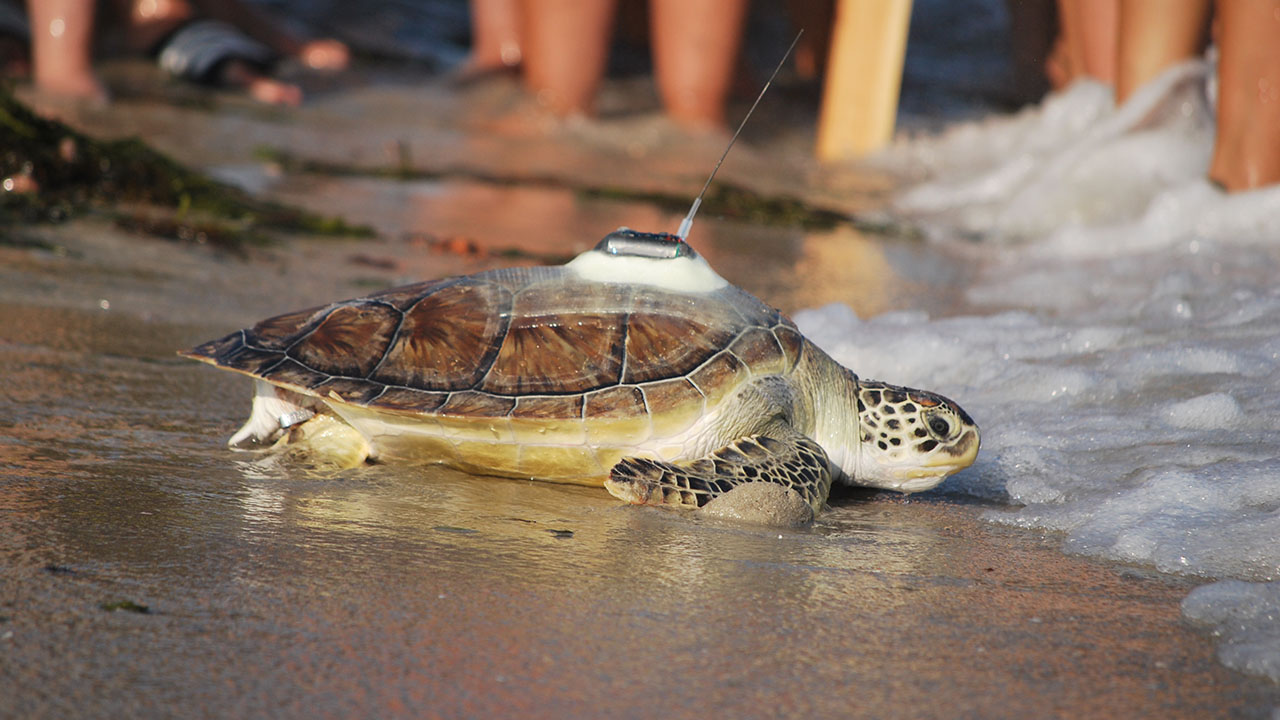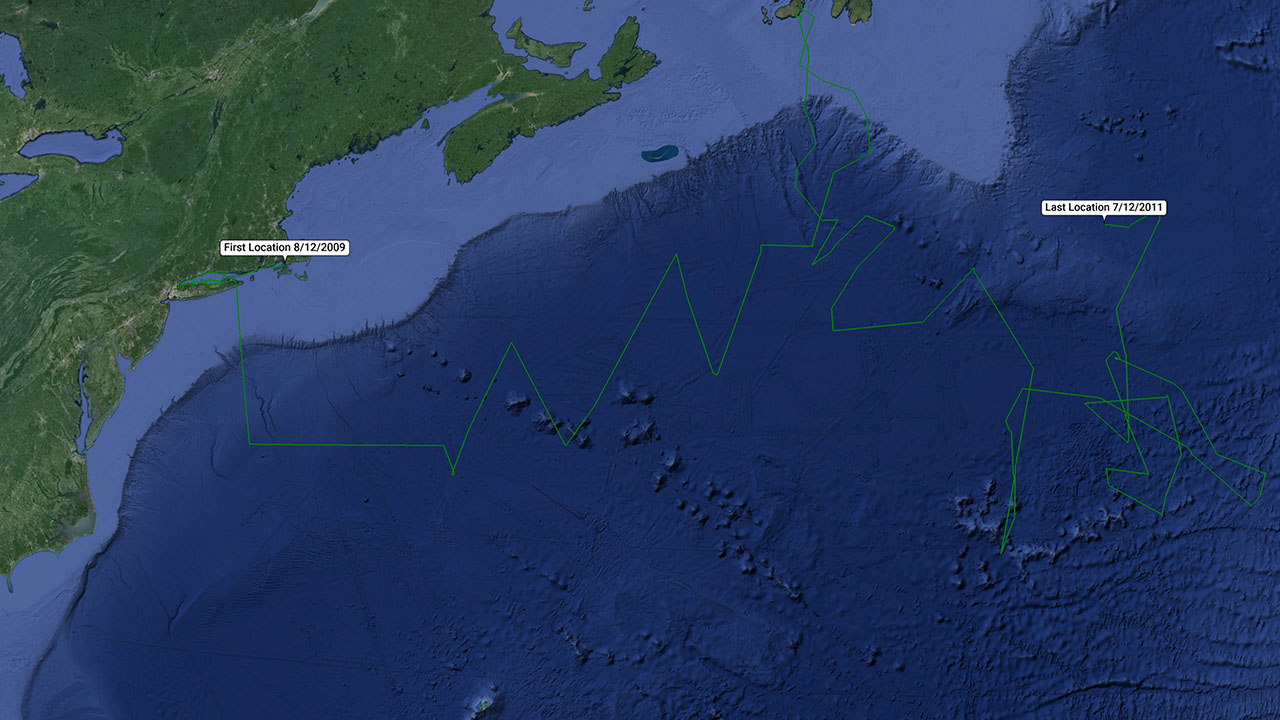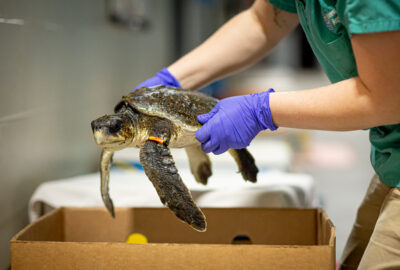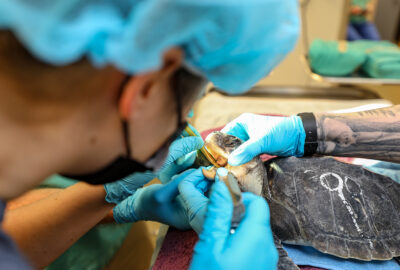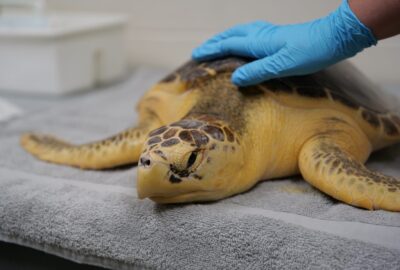Help Support the Sea Turtle Rescue Assistance Act
By New England Aquarium on Friday, June 17, 2022

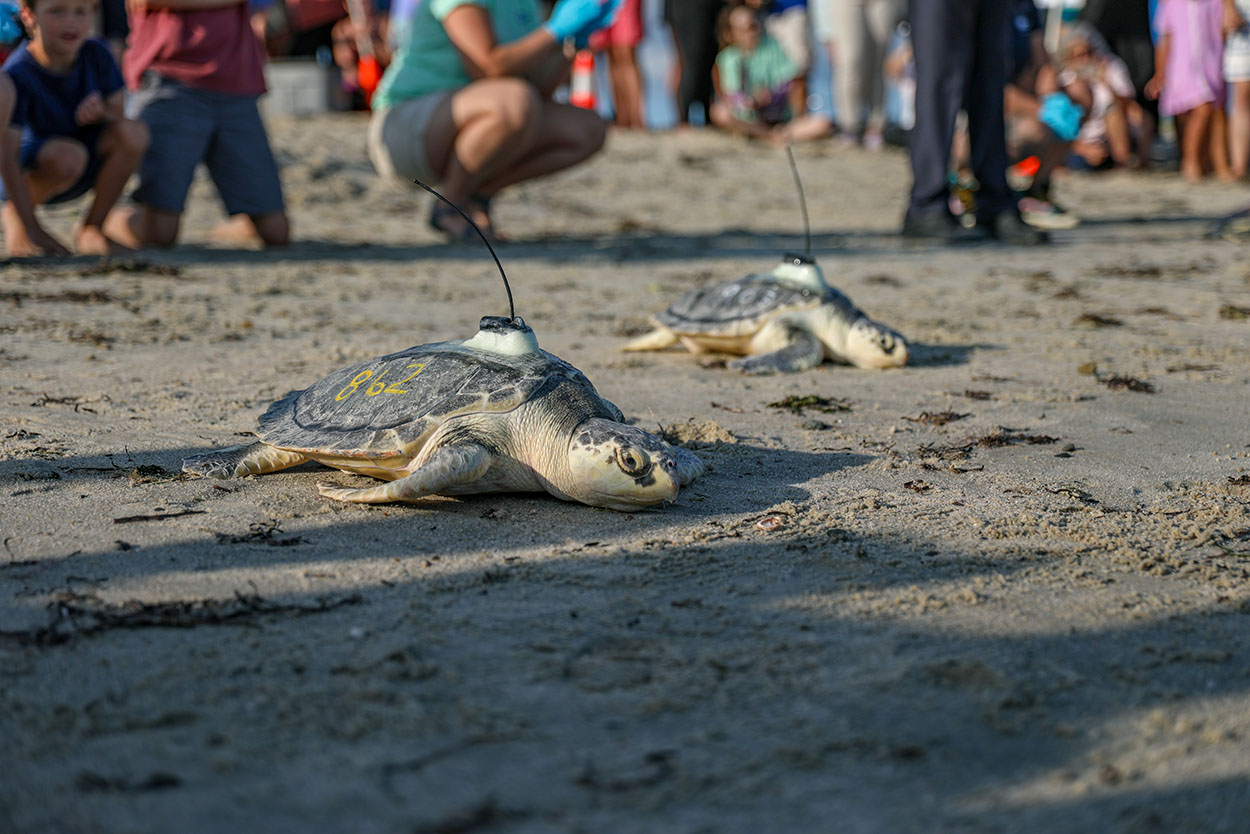
Since the 1970s, our Sea Turtle Hospital has helped rescue and rehabilitate over 5,000 injured sea turtles that have washed up on Massachusetts’ beaches—and the need is only growing, with hundreds of turtles stranding each year. The last ten years account for almost 80% of those total intakes into our rehabilitation center. Our Sea Turtle Hospital is just one of many similar sea turtle rescue facilities across the US working to help these endangered turtles.
Sea turtles strand due to several threats, many of which are caused by human activities. Yet, as the need for turtle rescue and rehabilitation grows, there is little federal support consistently available. The New England Aquarium, alongside the National Aquarium and South Carolina Aquarium, worked with members of Congress to introduce the Sea Turtle Rescue Assistance Act, which would establish a direct grant program to ensure more sea turtles recover and return to their ocean home.
Below, learn more about the Sea Turtle Rescue Assistance Act and how you can support this important work to protect sea turtles. Plus, meet three rescued and rehabilitated turtles that have been in our care and learn about the journeys they took post-release, which were tracked by satellite tag!
Take Action for Sea Turtle Conservation
In the past decade, the New England Aquarium has treated thousands of Kemp’s ridley, green, and loggerhead sea turtles who have experienced cold-stunning, ingested floating debris, faced marine entanglement, and more.
During the 2023-2024 cold-stun season, our Rescue and Rehabilitation team helped triage nearly 400 injured sea turtles. Sadly, these numbers are expected to rise annually due to climate change, ocean industrialization, and the proliferation of single-use plastics.
As we continue this critical rescue and rehabilitation work, federal support is needed. To advance the recovery of sea turtle species and respond to increasing rescue and rehabilitation demands, Senator Ed Markey (D-MA) and Senator John Cornyn (R-TX) as well as Representative Bill Keating (D-MA-9) and Representative Jenniffer González-Colón (R-PR) introduced The Sea Turtle Rescue Assistance Act to provide institutions across the country like ours with the consistent federal funding necessary to treat stranded marine turtles. These bills will help establish a grant program to fund recovery and rehabilitation efforts at institutions like the New England Aquarium and help us to continue collecting the data necessary for ongoing conservation research and understanding the survivorship of these endangered animals post-rehabilitation.
To encourage legislators to cosponsor the Sea Turtle Rescue Assistance Act, they need to hear from constituents like YOU about why sea turtle rescue and conservation are important. To make your voice heard, sign our statement of support and send a letter to your legislators, letting them know that this issue matters.
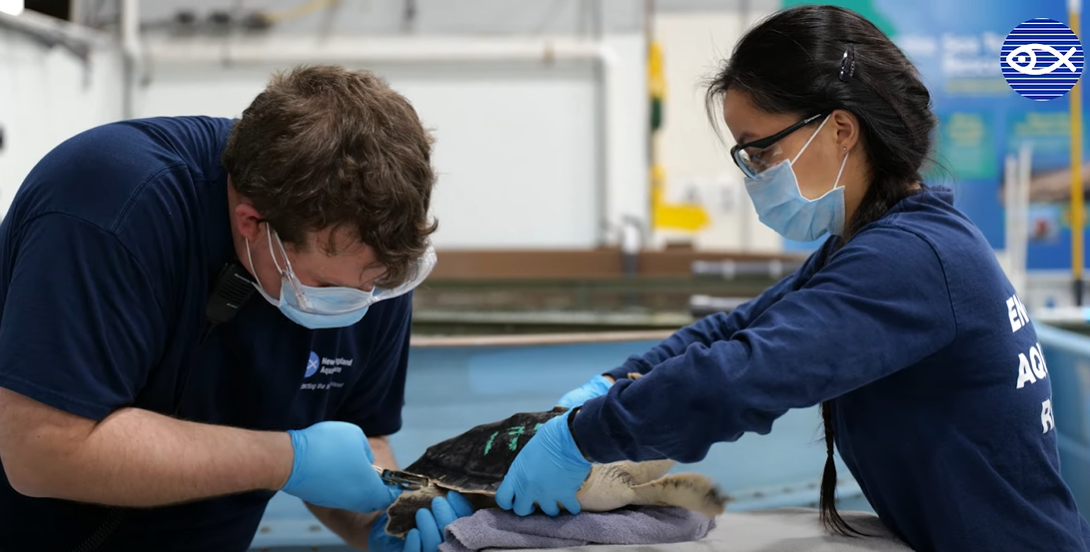
Virtual Visit: Sea Turtle Hospital
Thank you for taking action today–your voice on this issue will have long-lasting impacts on the thousands of sea turtles we rescue and care for in our facilities each year!
Meet Three Rescued Sea Turtles
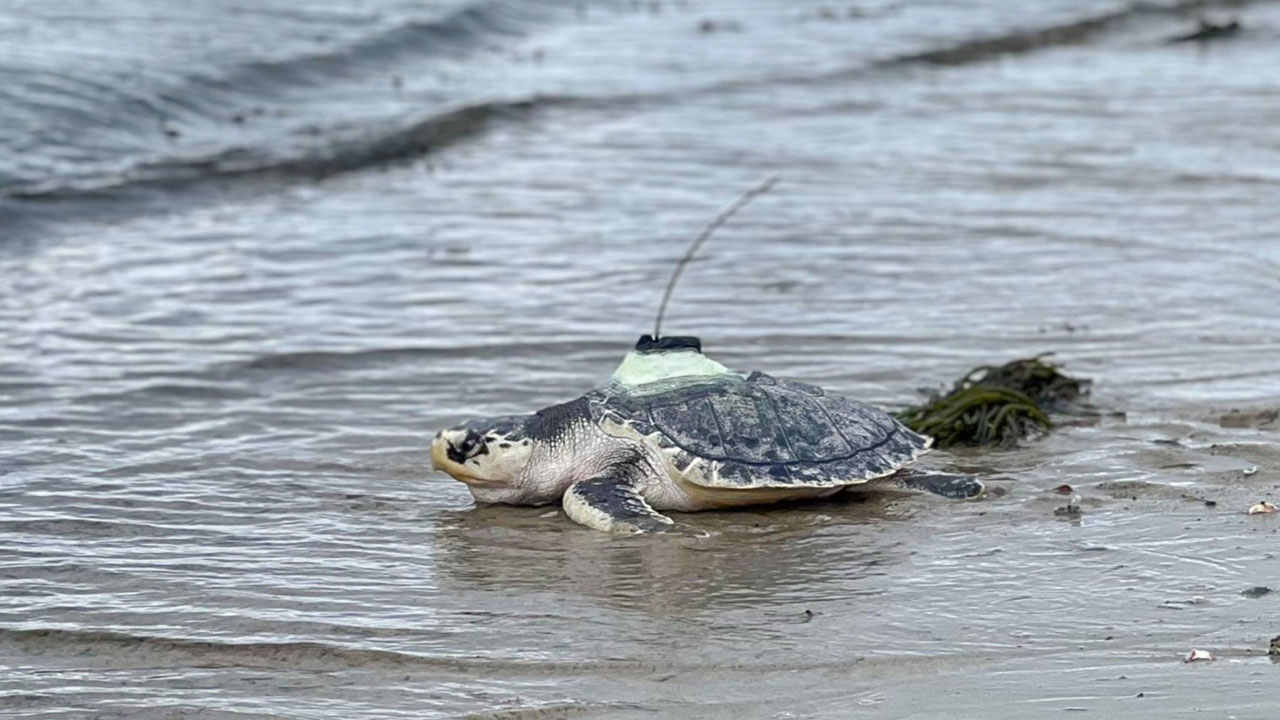
Rotelle
Kemp’s ridley sea turtle
Rescued December 19, 2022; Released August 17, 2023
When Rotelle was rescued, they were suffering from osteomyelitis—an infection of the bone that was affecting both of their elbows. Surgery was required to rid the infection, and an antibiotic gel was placed into the surgical sites to assist with healing and keep the infection from returning.
Rotelle recovered well, and our vet team thought they would be a good candidate for satellite tagging to understand the post-release survivorship of a turtle that had undergone this type of surgery. We tracked Rotelle for over 100 days until the battery on their satellite tag was depleted!
/
Goose
Green sea turtle
Rescued November 20, 2008; Released August 25, 2009
After their return to the ocean, Goose went on an adventure! They were the first turtle rehabbed at the Aquarium that was tracked returning to the Gulf Stream after release. Until then, our researchers believed that turtles of Goose’s age would migrate south to return to their habitat. Instead, Goose traveled far out to sea.
After seeing this behavior, our team started tagging more rehabilitated green sea turtles that were of similar size to Goose. While not all of the turtles followed in Goose’s path, many did! This data helps contribute to our overall understanding of green sea turtles’ behaviors in the ocean.
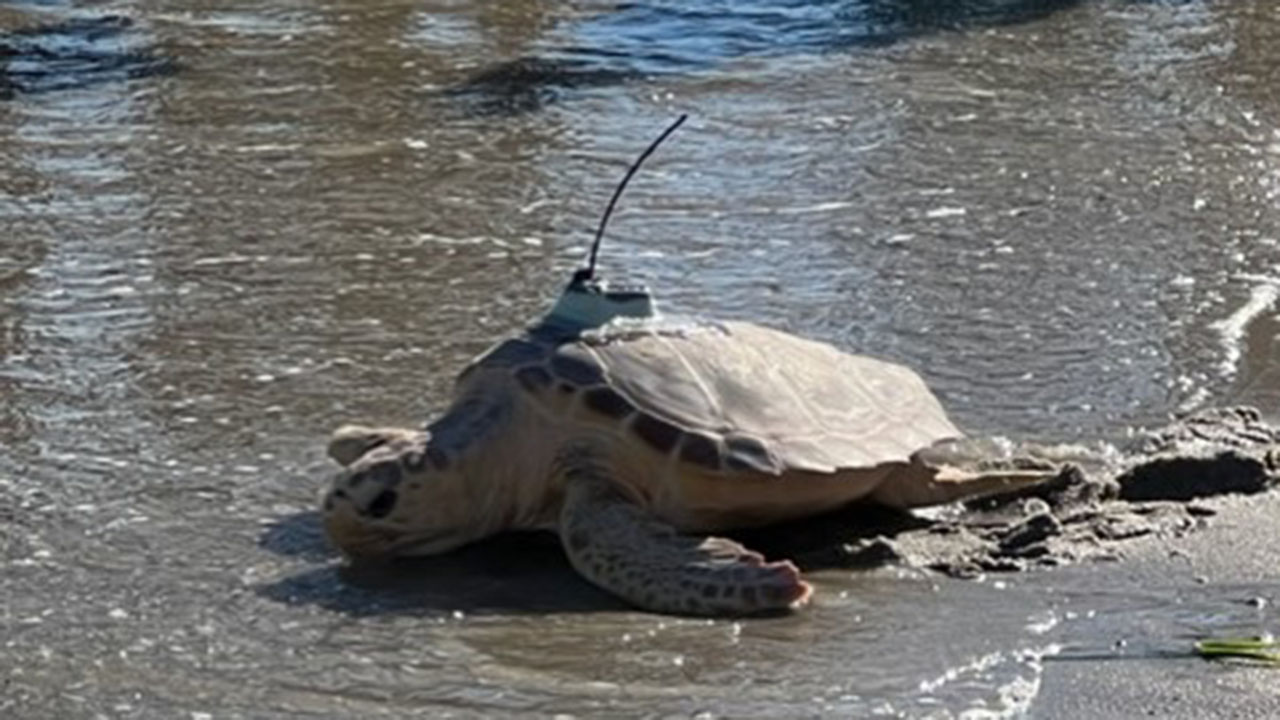
Allspice
Loggerhead sea turtle
Rescued December 21, 2021; Released June 29, 2022
When Allspice arrived at the Sea Turtle Hospital, they had several fractures that needed to be surgically repaired. After recovery, they were released into the ocean off Cape Cod in early summer of 2022, and their satellite tag returned data for more than a year afterward!
Allspice traveled almost all the way to Annapolis, Maryland, and stayed in the Mid-Atlantic region, where researchers often see loggerhead turtles of similar size. Later, Allspice returned closer to shore, and their tag finally stopped transmitting when they were near the coast of North Carolina.
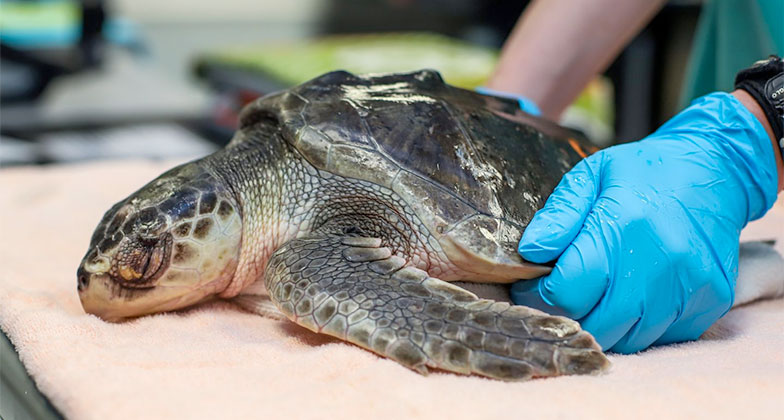
Threats to Sea Turtles
Cold-stunning
Turtles are ectothermic, meaning their internal body temperature is determined by the water or air around them. Sea turtles migrate seasonally to New England to find rich food supplies. In the fall, as water temperatures drop, sea turtles must migrate south into warmer water. Occasionally, turtles find themselves stuck in the hook-shaped Cape Cod Bay. As water temperatures continue to plunge, turtles become cold-stunned, similar to hypothermia in humans. They can also suffer secondary illnesses from cold-stunning, including abrasions, broken bones, and pneumonia. If not treated in time, cold-stunning can be fatal.
Climate Change
From sea level rise impacting nesting beaches to warmer water temperatures causing changes in food supply, climate change is already affecting sea turtles. Sea turtles display temperature-dependent sex determination, meaning temperature of the egg during incubation determines the sex of the baby turtle. Studies have shown higher temperatures are resulting in significantly more female turtles, limiting mate availability later in their life cycle.
Plastics and Trash
In important feeding areas, water currents can concentrate turtles’ food sources with floating debris. Turtles can mistake plastic bags, balloons, food wrappers, and more for food like jellies.
Entanglement
Entanglement in fishing nets or ropes can prevent air-breathing animals like sea turtles from swimming to the water’s surface, causing them to drown.
Habitat Alteration
Coastal development projects, erosion, sand mining, and excessive beach lighting result in a loss of nesting habitat for sea turtle populations.
Vessel Strikes
Collisions between sea turtles and large boats, recreational vessels, or ferries can result in severe injury or death for sea turtles as they surface to breathe, bask at the surface, or forage in shallow areas.

